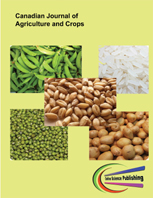Impact of Nitrogen Fertilization on Chlorophyll Content and Yield of Barley Cultivars Assessed by Fluorescence-Based Approaches
DOI:
https://doi.org/10.20448/803.5.2.138.152Keywords:
Simple fluorescence Ratio, Nitrogen balance index, Flavonol index, Grain yield, Fluorescence sensors, Summer barley, Chlorophyll content, Phenolic compounds.Abstract
Nitrogen (N) is one of the most important nutrients in crop production to ensure optimal yields. Determining leaf chlorophyll concentration can be a useful indicator of crop nitrogen status and production potential; nevertheless, it is costly, time-consuming and non-practicable when done with traditional wet-chemically methods. Instead, plant fluorescence approaches offer a rapid and non-destructive possibility to instantly assess chlorophyll, nitrogen as well as leaf surface phenolic compounds status. In this study, fluorescence-based sensors were employed to portrait plant physiological conditions and prognosticate yield performance of four different cultivars of summer barley (‘Beatrix’, ‘Eunova’, ‘Sebastiana’, and ‘Victoriana’) in response to three levels of nitrogen fertilization (0, 40, and 80 kg/ha). In addition, these indices were contrasted with chlorophyll measured quantitatively by spectrophotometry. Highest chlorophyll content (110 days after sowing, DAS) and grain yield (142 DAS) were observed in all cultivars when 80 kg/ha N was applied. Grain yield strongly correlated with leaf chlorophyll concentration (R2 = 0.7, n = 12), while estimated yield and chlorophyll content using fluorescence indices showed low to moderate correlations. Furthermore, indices estimating flavonol and nitrogen status were less precise, regarding correlations with final yield. Hence, further studies should concentrate on more cultivars and should also consider better adapted fluorescence indices and approaches to estimate plant physiological status in a non-destructive way during growing and pre-generative periods of barley.


